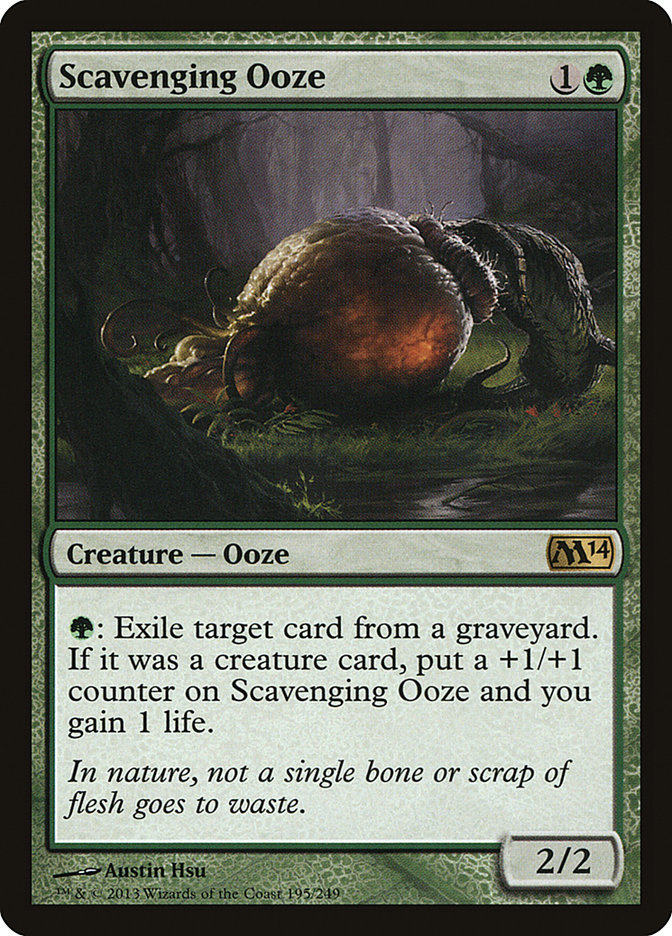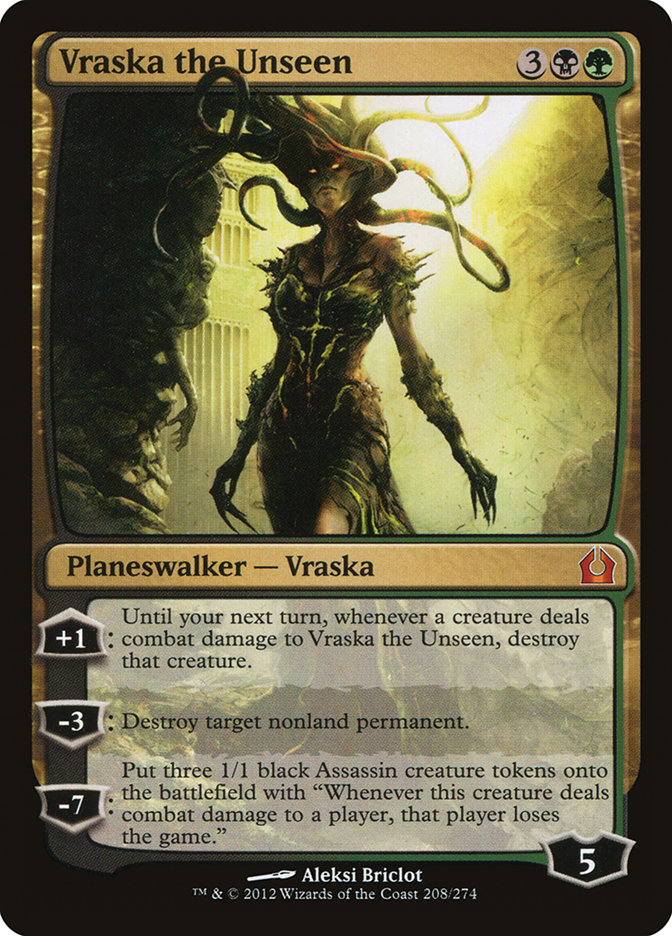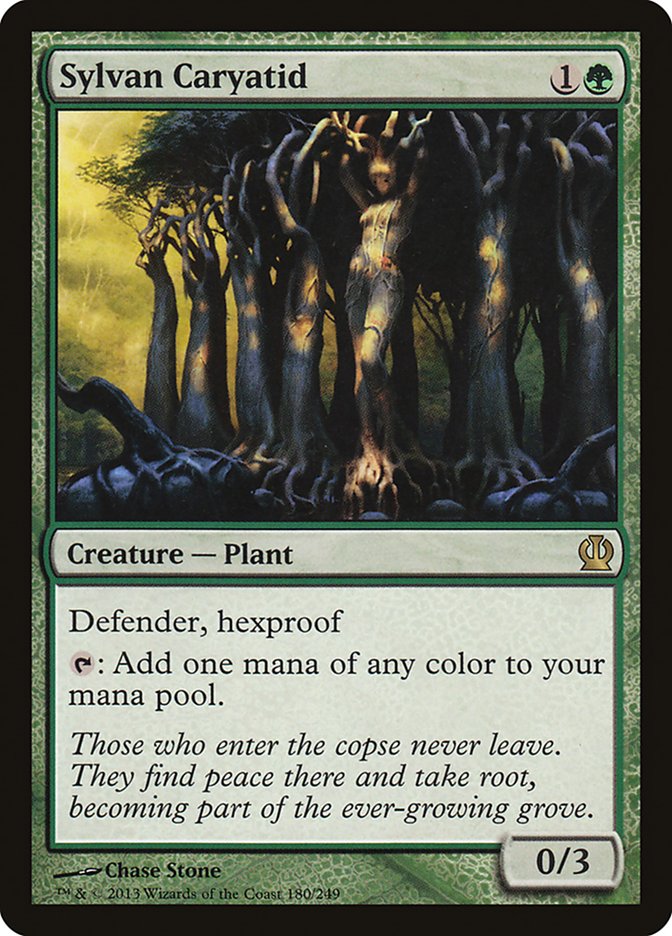This weekend marks the first big events for which Journey into Nyx will be legal.
I’ve talked at length about a few cards already
, like Mana Confluence, and
touched on all of the individual cards I see having the potential to have an impact
. This week, I want to step back and widen the lens a little bit. Rather than look at individual cards, I want to consider the implications of the new set
on the format as a whole, and what it means for what kind of decks you should look to be playing in the early weeks of the new Standard.
When in Doubt…Attack
This is a good fallback plan regardless, since proactive strategies are less dependent on knowing the specifics of a metagame in order to succeed, but it’s
especially true around the release of a new set and an even better plan than usual with Journey into Nyx.
Almost without fail, a new set release means that you see people brewing up crazy new decks. These decks are frequently clunky and untuned, and as such
easy prey for a strong, streamlined aggressive deck.
One simple card from Journey into Nyx makes this a particularly good time to go beatdown: Mana Confluence. While I stand by my statement that Mana
Confluence is the single most important card in the set for Standard, when I look around at the deck lists people are suggesting for the new format, I see
way too many copies of the new City of Brass than I should, and in many places it simply doesn’t belong.
Mana Confluence is a powerful card, but it doesn’t belong in every deck, and certainly not in the full four copies I keep seeing it penciled in as in a ton
of lists. While I can respect the desire to play on-curve in a deck like B/W Midrange, I’m pretty sure you’ll lose more games to taking 3-5 damage from
Mana Confluence (on top of Thoughtseize and Underworld Connections) than you would from having an Orzhov Guildgate enter the battlefield tapped in the
early turns of the game.
Here are some general rules of thumb. If your deck is two colors, you don’t want to play Mana Confluence unless you’re extremely aggressive and looking to
end the game with early pressure. If you’re three colors, you might want some number of copies in a midrange style deck (like, say, Jund Monsters), but you
probably don’t actually want to play four. Being forced to play Mana Confluence as one of your first lands can cause you some serious pain; having to play
multiples can almost put you dead on the spot. If you’re playing control, you almost certainly don’t want to play Mana Confluence at all – you likely have
all the tools you need in Temples, and if you really need more mana fixing, there are all kinds of options like Chromatic Lantern and Sylvan Caryatid out
there that won’t kill you.
You’re going to find a lot of people out there that haven’t read these rules, though, or who do not heed them despite the fact that they ought to know
better. And those are the people who you want to punish for their foolishness by making them truly pay for their greedy mana. Playing an aggressive deck
that puts a lot of pressure on your opponent’s life total is the best way to do that. They won’t be able to cast all of their fancy spells when they’re
dead.
Be Prepared to Fight
On the flip side, it’s important to keep in mind that you’re not the only person in the world who can figure things out. Other people out there are going
to draw the conclusion that aggressive decks are the place to be right now, and you’re going to have to be ready for them. While Mana Confluence may make
it possible to play some kind of crazy suicidal three-color aggro deck, that doesn’t mean it’s a good idea – you’re going to have to be ready to play
against opponents who are also trying to kill you quickly, and all of that damage you deal to yourself can add up fast.
It’s easy to tell yourself that your life total doesn’t matter because you’re playing beatdown, but it certainly does matter when you find
yourself head-to-head with opponents who envision themselves in the same role as you, especially when they’re going about it in a less self-destructive
fashion.
I would not be surprised to see aggressive red decks like Patrick Sullivan’s creature rush deck or R/W Burn be extremely popular over the first few weeks
of the format. Historically, red decks have done very well immediately after a new set release, for precisely the reasons discussed above, and I would
expect them to be even more effective right now thanks to Mana Confluence.
My advice would be to play an aggressive deck that is well suited to beating other aggressive decks, not simply preying on the shaky mana bases of all of
the brews out there. Be ready to mix it up in the red zone.
Re-Evaluate Old Cards
The most compelling thing about Magic, and the element that keeps us coming back over and over after so many years, is that despite staying the same basic
game, new cards keep it ever-changing. One of the most important things to do whenever a new set comes out is think about what the new cards mean for the
old cards out there. I want to touch briefly on a few old cards whose stock I think will go up in the early weeks of the new format.
Scavenging Ooze is already a strong card in Standard, but I think it’s poised to be one of the best. Ooze is at its strongest against graveyard-based
strategies and in matchups between two creature decks. The printing of Nyx Weaver seems likely to invigorate the former, providing both a powerful engine
for filling the graveyard as well as card selection via its Regrowth effect. The impact of that ability isn’t quite understood yet, I think. The current
Standard graveyard decks have cards that are wildly disparate in power level and it’s easy to draw a bunch of low impact enablers and not enough power
cards. Nyx Weaver is an enabler that you can exchange for a payoff card when the time is right, and that’s likely to give the strategy a big boost.
In a world of Nyx Weavers and beatdown decks, I want to be the guy with the Scavenging Ooze on my side.
Abrupt Decay is a card that I’ve played a lot over the past year or so. It was already one of the biggest draws to playing G/B because it offered a removal
effect against small creatures that was rarely dead against other decks since it could answer troublesome cards like Underworld Connections and Detention
Sphere. Decay’s stock is likely to go up with the inclusion of Journey into Nyx in part because of a likely resurgence in aggressive decks on the back of
Mana Confluence, and also because the introduction of Banishing Light means that can serve as an answer to yet another opposing removal spell. It’s also
worth noting that Abrupt Decay is one of the few maindeckable effects that can kill a Hall of Triumph, in case that card becomes something that people are
using to protect their Master of Waves tokens from death.
The printing of Temple of Malady (Finally!) is also great news for Abrupt Decay fans. Abrupt Decay is the sort of card that is perfectly
suited for midrange strategies, because it’s an incredibly flexible removal effect that can be used to defend yourself against beatdown and protect your
threats against control. Midrange decks are among those best served by scry effects, since they frequently have cards that have vastly different values in
particular matchups. I know that I’ve lamented the lack of a G/B scry land for months, and now that it’s finally here, I certainly want to see how big of
an impact it can have on the effectiveness of Golgari Midrange.
I would also not be surprised to see a serious spike in the popularity of Hexproof decks, thanks to the printing of new two-drop hexproof creature Bassara
Tower Archer and the additional mana fixing from Mana Confluence. Abrupt Decay is one of the absolute best tools you can hope to have against these decks,
since you can actually kill their power-boosting enchantments and leave them with their wimpy creatures on the ground that you can much more easily manage.
Vraska’s stock goes up for many of the same reasons as Abrupt Decay’s. Banishing Light means there are likely to be more things that you can kill
proactively to further your board presence, and Temple of Malady makes the color combination better overall. I think Vraska has been really underrated for
a while now already, and while she isn’t great against aggressive decks, she provides a ton of flexibility and is at least passable in every matchup.
Sylvan Caryatid is already one of unsung heroes in Standard. It’s a powerful mana fixer and accelerator that’s really the glue that holds a lot of decks
together. One seriously overlooked feature of Caryatid is the fact that it’s a 0/3 Hexproof body, which makes it an amazing blocker. If the world of Nyx
that we’re journeying into is going to be an extremely aggressive and dangerous place, I’m definitely in the market for trees to hide behind.
It also stands to reason that if people are going crazy with Mana Confluence, a lot of their multi-color decks are going to want extra sources of mana
fixing. Caryatid is the best in the business right now, and I wouldn’t be surprise to see it start seeing even more play than it already does.
How about we apply this knowledge and take a look at a couple of decks, shall we?
Creatures (34)
- 3 Scavenging Ooze
- 3 Brushstrider
- 4 Burning-Tree Emissary
- 4 Experiment One
- 3 Slaughterhorn
- 4 Elvish Mystic
- 4 Kalonian Tusker
- 4 Reverent Hunter
- 1 Nylea, God of the Hunt
- 4 Boon Satyr
Lands (23)
Spells (3)
Sideboard

This deck comes strongly from the philosophy of playing an aggressive deck that can beat other aggressive decks. This is very clearly an adaptation of
Mason Lange’s Mono-Green deck from SCG Milwaukee a while back, with the big difference coming in the inclusion of the new Setessan Tactics. Tactics gives
this deck a dimension that it just didn’t have before, offering a tool to break through creature stalemates. It’s also a totally reasonable combat trick,
giving you the ability to pump your entire team for just one green mana each.
Tactics is one way that this deck fights back against other creature decks, but the combination of Scavenging Ooze in the maindeck and Nylea’s Disciple in
the sideboard means that you’re almost never going to get rushed down by an opposing aggressive deck. Ooze and Reverent Hunter give you the tools to go big
when the game goes long.
And something a bit more midrangey…
Creatures (18)
- 3 Scavenging Ooze
- 3 Polukranos, World Eater
- 4 Sylvan Caryatid
- 3 Reaper of the Wilds
- 4 Courser of Kruphix
- 1 Pharika, God of Affliction
Planeswalkers (2)
Lands (25)
Spells (15)

This is clearly an update to my old Golgari Midrange deck that I was trying to make work for a while. The biggest problems that deck had were its
difficulty in closing out games and the inconsistency inherent to midrange strategies with disparate cards. The primary new card here is obviously just
Temple of Malady, which I think is a far bigger deal than most people realize. I’ve pouted so many times over the past six months or so every time I played
a Golgari Guildgate and my opponent played a Temple, and now I can be all smiles at last.
I am trying one copy of Pharika in here despite maligning it in my look at individual standout cards in the set. I think it might have some amount of
potential here mostly due to how readily this deck can actually assemble the requisite devotion to get it online. Between Courser of Kruphix and Underworld
Connections, this deck offers a number of stable sources of devotion, and a 5/5 indestructible body is pretty decent, even if its activated power doesn’t
hold a candle to the other gods. It may have an impact in some kind of constellation deck, because hidden in that incredibly long sentence is the fact that
the snakes you create are Enchantments as well, but that’s something I’m going to have to explore in another deck entirely.
What do you think? What will you be playing this weekend? Are you going to be attacking, or are you going to be making a mistake?




